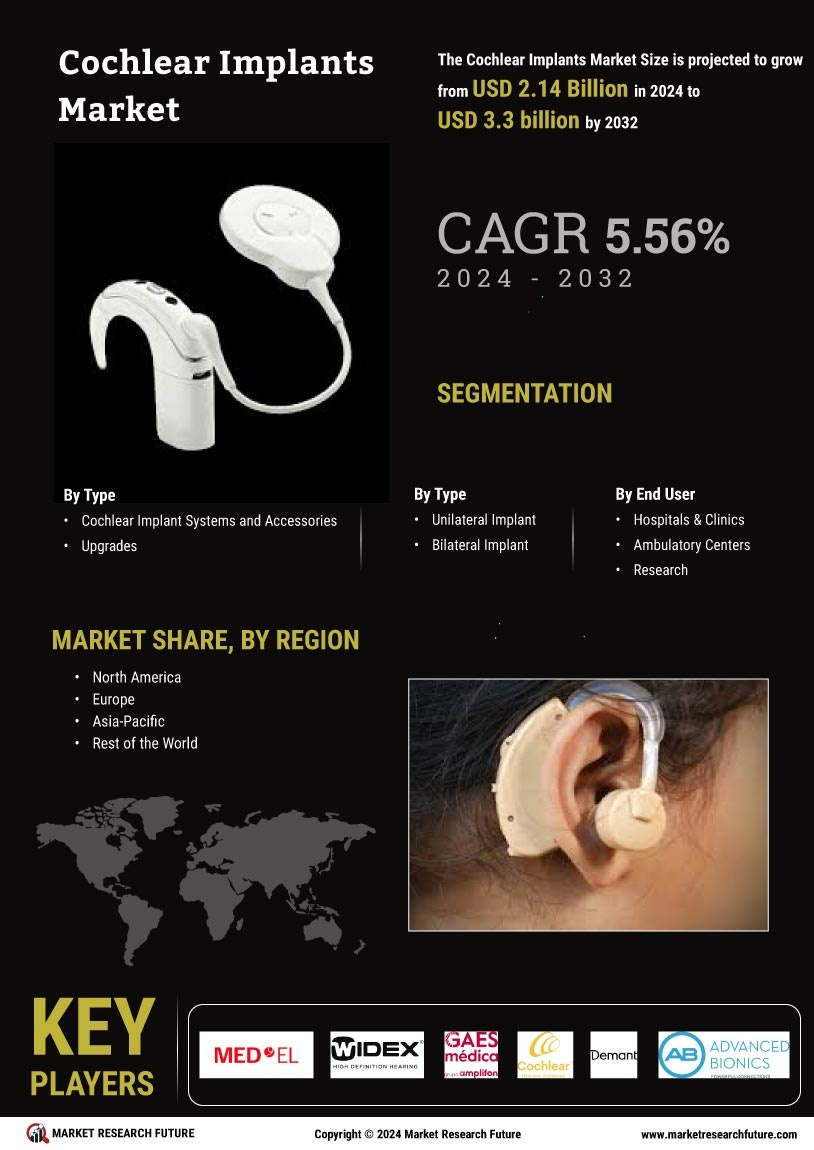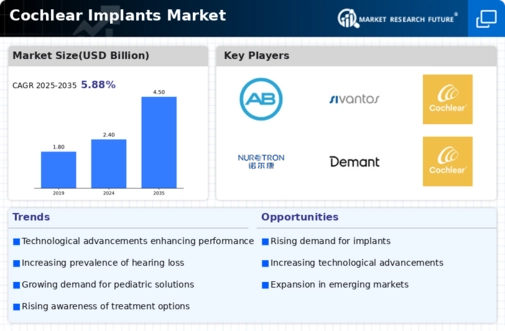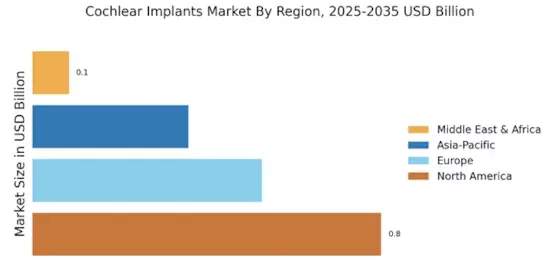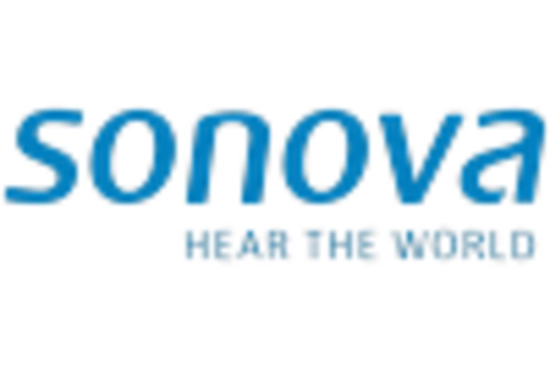Growing Geriatric Population
The aging population is a crucial driver of the Cochlear Implants Market, as older adults are more susceptible to hearing loss. With the global population aged 65 and older projected to reach 1.5 billion by 2050, the demand for cochlear implants is expected to rise correspondingly. This demographic shift necessitates effective solutions for age-related hearing impairment, prompting healthcare providers to recommend cochlear implants as a viable option. Furthermore, as older adults increasingly seek to maintain their quality of life through improved hearing, the market for cochlear implants is likely to expand, presenting opportunities for manufacturers to cater to this growing segment.
Increased Awareness and Education
Increased awareness and education regarding hearing loss and cochlear implants are driving growth in the Cochlear Implants Market. Educational initiatives by healthcare professionals and organizations are informing the public about the benefits of early intervention and the effectiveness of cochlear implants. As more individuals become aware of their options, the likelihood of seeking surgical solutions increases. This heightened awareness is also reflected in the rising number of audiologists and hearing specialists who are advocating for cochlear implants as a treatment option. Consequently, the market is poised for growth as more patients pursue cochlear implantation to address their hearing challenges.
Rising Prevalence of Hearing Loss
The Cochlear Implants Market is experiencing growth due to the increasing prevalence of hearing loss across various demographics. According to recent data, approximately 466 million people worldwide suffer from disabling hearing loss, a figure that is projected to rise significantly in the coming years. This surge in hearing impairment is attributed to factors such as aging populations, exposure to loud noises, and certain medical conditions. As awareness of the benefits of cochlear implants grows, more individuals are seeking surgical interventions to improve their quality of life. This trend is likely to drive demand for cochlear implants, thereby expanding the market and encouraging further innovation in device technology.
Government Initiatives and Funding
Government initiatives aimed at improving healthcare access are significantly influencing the Cochlear Implants Market. Many countries are implementing policies to subsidize the cost of cochlear implants, making them more accessible to individuals with hearing loss. For instance, various health insurance programs now cover cochlear implant surgeries, which has led to an increase in the number of procedures performed. Additionally, public health campaigns are raising awareness about hearing loss and the benefits of cochlear implants, further driving demand. This supportive regulatory environment is likely to foster market expansion and encourage manufacturers to innovate and improve their offerings.
Technological Innovations in Cochlear Implants
Technological advancements play a pivotal role in the Cochlear Implants Market, as innovations continue to enhance the performance and user experience of these devices. Recent developments include improved sound processing algorithms, wireless connectivity features, and miniaturization of components, which have made cochlear implants more effective and user-friendly. The introduction of hybrid cochlear implants, which combine acoustic and electric stimulation, has also broadened the potential patient base. As these technologies evolve, they are expected to attract more patients, thereby contributing to market growth. The ongoing research and development efforts in this sector suggest a promising future for cochlear implant technology.


















Leave a Comment